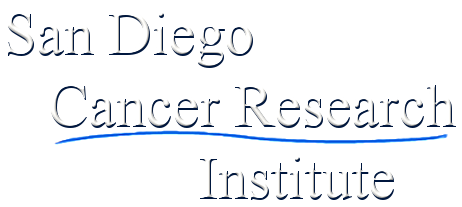Our SDCRI History
September 2024 updated summary and edited version of our original abstract published at the American Psychosocial Oncology Society (APOS) in February 2010.
UNDER ONE ROOF:
THE HOW AND WHY OF AN INTEGRATIVE ONCOLOGY PROGRAM
By Daniel Vicario M.D., Paul Brenner M.D., Ph.D., Mary Hollander R.N.
PURPOSE: An Integrative Medicine/Oncology program within a mid-sized, traditional Oncology practice is invaluable to enhance patient quality of life, satisfaction and to diminish nurse and physician’s burnout. The Integrative Oncology Program at the San Diego Cancer Center (SDCC) and San Diego Cancer Research Institute (SDCRI) existed for two decades with several medical oncologists, oncology nurses, up to fifty volunteer practitioners of the many healing arts and a medical psychologist as vital support to their medical care. It is our hope that this medical model can be easily replicated at other mid to large-sized cancer facilities throughout the United States.
METHODS: The Integrative Medicine program had at one point fifty volunteers that offered cancer patients, free of charge: Nutrition education, Acupuncture, Biofeedback, Yoga, Meditation, Qigong, Energy Medicine (Biofield Therapies), Massage, Art Therapy, Pet Therapy, Music Therapy, Tibetan Bowls, Hypnosis and Support Groups for patients and caregivers. All volunteers were required to fill out an application and a background check. We obtained a copy of their highest professional certificate and driver’s license. In the application we asked for professional references and educational background. Volunteers were interviewed by a nurse practitioner who oversaw the program and by staff physicians. Physicians and patients were interviewed periodically to evaluate the practitioners as to their demeanor and effectiveness. This feedback was key to the success of our program.
RESULTS: The Integrative Medicine Program was utilized to diminish pain, alleviate symptoms from the cancer, side effects from chemotherapy and radiation, and offer techniques to relieve situational depression, anxiety and to improve the quality of life of patients and their caregivers. Our medical psychologist, Dr. Paul Brenner, who was a key member of our team, offered skills for self-empowerment as well as counseling for the terminally ill. We were not able to measure data to show that the Integrative Program had changed the survival rates for our stage IV cancer patients, but from our observation, they not only had a significantly improved quality of life, but seemed to live longer than any historical control. In summary, the inclusion of these dedicated health professionals into our traditional allopathic practice had markedly enhanced the quality of life and care far beyond what we were previously able to offer our patients. We had gone from a medical environment to an “optimal healing one”. It made our practice of Oncology more enjoyable and effective for the patients, nurses, oncologists and all staff at our center. In 2008 the San Diego Cancer Center and Research Institute was the winner of the Hope Award presented by Hematology Oncology News.
RESEARCH IMPLICATIONS: In truth, it is very difficult to evaluate the effectiveness of an Integrative program without research funding other than through patient satisfaction and the knowledge that every attempt is being met to enhance the healing environment and services at a cancer facility. Around 2012, we were beginning to collect data as to the significance of this program. Unfortunately, the integrative program closed in December 2014 as described previously on our SDCRI website.
CLINICAL IMPLICATION: A fully INTEGRATIVE MEDICINE/ONCOLOGY PROGRAM can be created in any mid-sized oncology practice. The value of this program is a gift to both patients and physicians.
In 1995 Dr. Dan Vicario created and directed the Integrative Oncology Program at the San Diego Cancer Center (SDCC). This Integrative Program emerged at SDCC and it expanded rapidly in 1998, under the umbrella of the nonprofit San Diego Cancer Research Institute (SDCRI). With the help of nurse coordinator Mary Hollander and a large number of outstanding volunteers, for which Dr. Vicario remains deeply grateful, it was truly a co-creation with the community of healing practitioners.
These are the integrative modalities used at SDCC/SDCRI:
- Nutrition Classes
- Support Groups for patients and caregivers: Emotional Well Being. Stress management. Feeling Empowered.
- Yoga
- Empowerment Techniques: meditation, MBSR (mindfulness based stressed reduction)
- Massage (medical): oncology massage certification
- Acupuncture: oncology certification
- Energy Medicine: Reiki, Healing Touch
- Craniosacral Therapy
- Qi gong
- Expressive Art therapy: HMV (Hope made visible)
- Pet therapy
- Music. Drum circle. Sound Healing. Tibetan Bowls
- Journaling
- Biofeedback
- Humor. Laughter Yoga
- Support Groups for staff: nurses, doctors and all staff
- Feldenkrais Method
- Life Coach
- Medical Hypnotherapy
Dr. Vicario continues to honor this community of patients and volunteers coming together to co-create such a successful Integrative program that benefited countless number of San Diego County cancer patients and their loved ones for over two decades.
